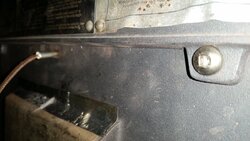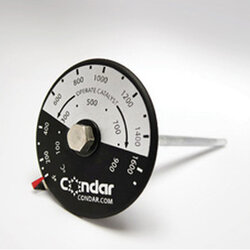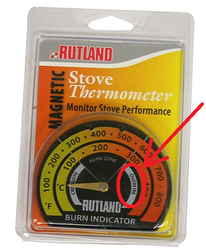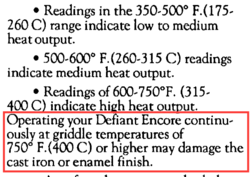RandyBoBandy
Minister of Fire
Your encore doesn’t have a plug in the back that you can remove and install a probe thermometer?
At this age what else are you going to spend your money on?
Along with liver transplants and antibiotics.Expensive booze and cheap women.
I guess Oscar did die before Felix... but only by a few months!Along with liver transplants and antibiotics.
What you've told us so far is that running the stove on low sometimes causes the cat to stall and then puffback. The remedy for this may be as simple as giving the fire a bit more air. Have you done partial loadings to see how the stove does? If it continues to be cranky at a low setting or with partial loading then change out the stove. At this age what else are you going to spend your money on?Hopefully you'll be around for the next 10 yrs and as you get older you will appreciate the bone warming heat even more.
Your encore doesn’t have a plug in the back that you can remove and install a probe thermometer?
Do you have a thermometer made for stove top temperature reading? If not buy one and place it in the middle of the griddle. That way you can at least know when to engage the cat according to the manual's instructions. 3 logs may be enough on a reload to get the stove top back up to 450F which is hot enough to engage the cat. On a cold start it may take more wood to reach this temperature.
http://www.condar.com/Stovetop_Thermometers.html
I think they have a nutrutional "app for that," for the liver anyway..Along with liver transplants and antibiotics.

He might crack down, depending on what kind of mood he's in. And he rides herd on posters that may be in a bad mood, of which I've been guilty on occassion.BTW - begreen, you're a ... mooderator??? What's a mooderator?

You probably will find in the manual that you are supposed to open the bypass a few minutes before you open the door to load, then burn in the new load a bit to get rid of some moisture before closing the bypass again. You do this to avoid "thermal shock" to the cat, which can cause it to crack and crumble. With your dry wood, this could be less of an issue. But I'm not even sure what kind of re-burn system of cat your stove has.it has been easier and easier to get the cat to kick in after adding a stick or two. The last time I did, about half hour ago, it seemed like it never even stopped firing. Dropped them in, closed the damper, went outside and there was almost no smoke right away. So there is something there as to having the whole thing inside being up to heat.
should I expect that when the cat is running nice and hot there should be NO visible smoke? There have been times that I see nothing at all except the wiggly stream of heat visible against the sky.
If it's white and dissipates quickly it may be steam.At least if the smoke is that white, it wont have much if any creosote, right?
BTW - begreen, you're a ... mooderator??? What's a mooderator?
“You can have the wife, but not my STOVE!”The wonderful woman I married was married before, and the old stove I've referred to above was that husband's thing, and they lived in an older house. He had started with a Defiant, precursor to the Defiant Encore. When he got the Encore, he rebuilt the chimney [himself] and was into the rather new catalytic thing at that time. After he left and I came on the scene, I married the wife, the house and the stove. I had to figure out the catalytic [I didnt have the manual] and apparently I didnt get good enough at it, because I had a very scary chimney fire after a while.
I think they have a nutrutional "app for that," for the liver anyway..
You probably will find in the manual that you are supposed to open the bypass a few minutes before you open the door to load, then burn in the new load a bit to get rid of some moisture before closing the bypass again. You do this to avoid "thermal shock" to the cat, which can cause it to crack and crumble. With your dry wood, this could be less of an issue. But I'm not even sure what kind of re-burn system of cat your stove has.
Yes, you should get no smoke when the cat is working correctly. As you've found, it's all about getting the stove up to temp before closing the bypass. This takes longer, the more the stove has cooled off at the end of the load.
He's in charge of making sure we don't try to discuss booze and cheap women instead of stoves.
He also rehomes lost posts, enforces thread size limits, tells people not to get into flame wars with bholler, and dispenses sage stove advice (I suspect he has a keyboard macro for "Which Stove Should I Get", "Help My Stove Is Smoking", and "Why Are My Burns So Short").
Not sure about the extra O; I suspect a cownspiracy there, though it could just be a cowincidence.
In your original post you state you have a 1992 encore. Can I assume this is the year? What is the model? Should be a tag on the back of the stove. Also look in the middle of the stove back. Above the secondary air supply there should be a plug or bolt. This would be where your cat probe would go. I would post a picture of mine but I have the rear heat shield on.

The hole for the cat probe is between the secondary air cover and the cat access cover. I recently got a probe and an Auber AT100 thermometer to monitor my new cat, and found out that with my leaky old Encore, it was almost impossible to keep the cat below 1600 unless I put a very small load of wood in the stove. After replacing door, ash door and glass gaskets as well as cat cover and flue collar gaskets, I have it more under control. Here's a picture of the cat probe location. You probably have a small domed metal plug covering the hole. View attachment 222155


 I presume that 700 degrees is a long way from that!
I presume that 700 degrees is a long way from that!The ranges on the Rutland are somewhat arbitrary guides. Our stove cruises around 650-700 frequently.
Where are you reading the temperatures? What part of the stove was glowing red? That's too hot.
Follow the manual's temperature recommendations.The stove starting to glow??


